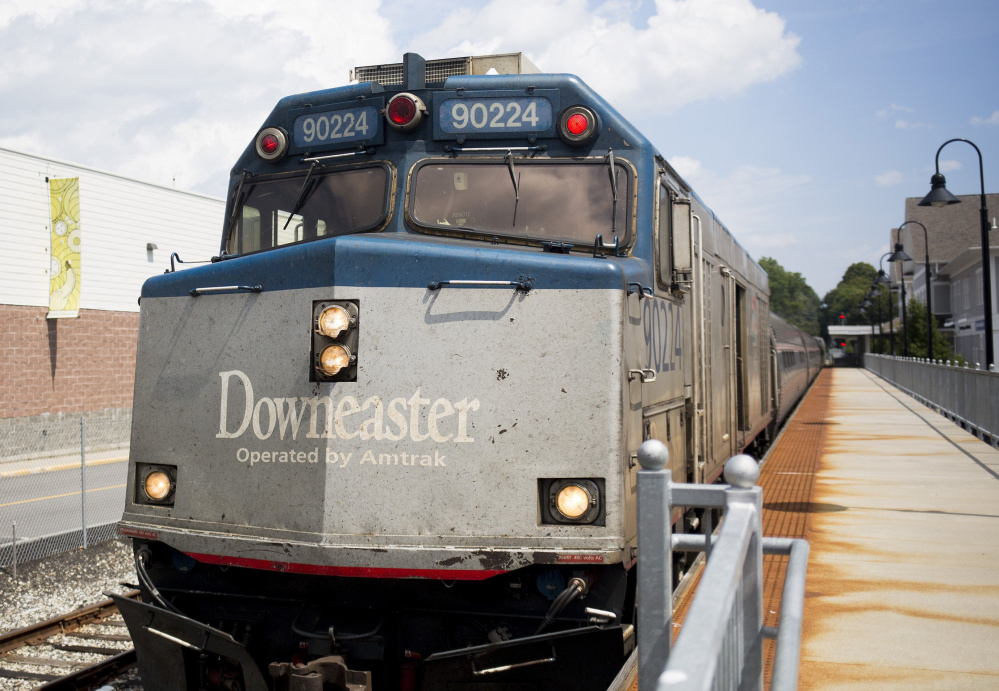PORTLAND — Fifteen years after passenger train service resumed between Boston and Portland, Amtrak’s Downeaster has been a runaway success, with increased speed, ridership and service.
Thursday was the anniversary of the resumption of service between Massachusetts and Maine. It took a decade of lobbying and more than $50 million for track upgrades for the first trains to run since the 1960s on a cold rainy morning 15 years ago. In the years since, more than 6 million passengers have avoided busy Interstate 95 by riding the rails.
Wayne Davis, a banker and rail advocate who pressed for the service, said he doubts that the service could’ve been created in the current political climate.
“We’re proud of it, but it couldn’t be done today. It’s a case of being in the right place at the right time,” said Davis, founder of TrainRiders Northeast.
Davis hatched the idea for restoring passenger rail service between Portland and Boston and sold then-Transportation Commissioner Dana Connors on the idea in the late 1980s. TrainRiders Northeast proceeded to collect more than 90,000 petitions demanding the rail service.
Then-Sens. Olympia Snowe and George Mitchell secured tens of millions of dollars to upgrade the tracks that carried slow, heavy freight trains for high-speed passenger trains.
Michael Dukakis, Amtrak’s acting chairman at the time, was among dignitaries who rode on the train’s inaugural run. Regular service started on Dec. 15, 2001.
Lionel and Marilyn Caron, of Lisbon, rode the train on the first run so they could visit Boston’s Quincy Market. And they’ve ridden it several times since.
“I was hoping they’d make it,” said Caron, who said he and his wife prefer to ride the train so they don’t have to fight for a parking space in Boston.
But success was not guaranteed. Even Davis, the biggest proponent, was unsure whether the train could compete with passenger cars and buses. But the service stayed, and grew.
Over the years, the train has been popular with travelers, commuters and young adults who’re less infatuated with cars, said Patricia Quinn, executive director of the Northern New England Passenger Rail Authority.
“From a transportation standpoint, the Downeaster has evolved from an amenity or attraction into a viable means of transportation,” she said.
The service started at 60 mph for a top speed. The speed eventually increased to 80 mph and more trains were added. Service eventually expanded north to Freeport and Brunswick in 2012. Just last month, a garage opened in Brunswick to allow trains to stay overnight, increasing efficiency.
These days, there are stops in Boston, Woburn and Haverhill in Massachusetts; Exeter, Durham and Dover in New Hampshire; and Wells, Saco, Old Orchard Beach, Portland, Freeport and Brunswick in Maine.
The service is coming off an 18-month stretch of maintenance that caused delays and cancellations, but most of that work is now complete and the tracks are in good shape, Quinn said. She said she thinks that ridership will soon top 500,000 riders a year.
Send questions/comments to the editors.


